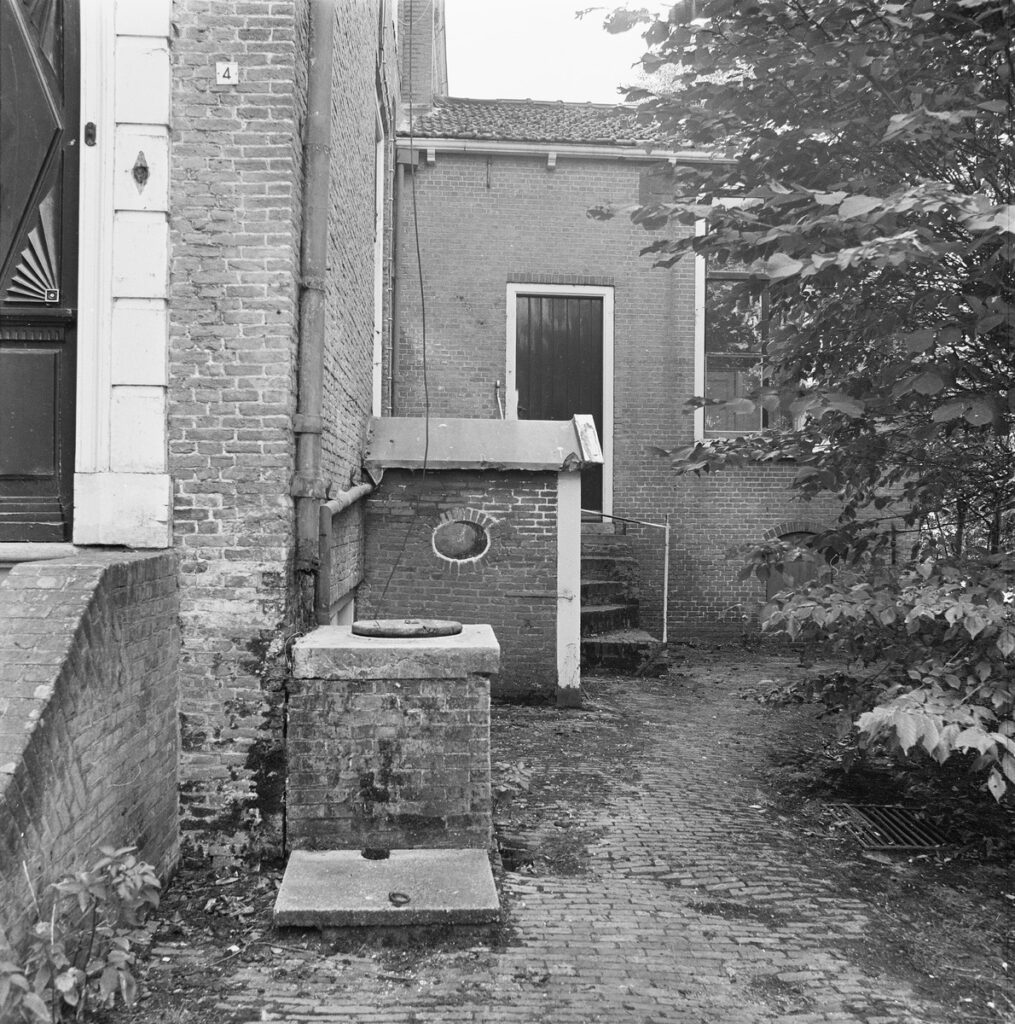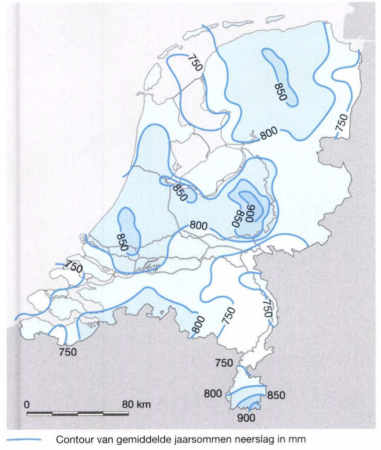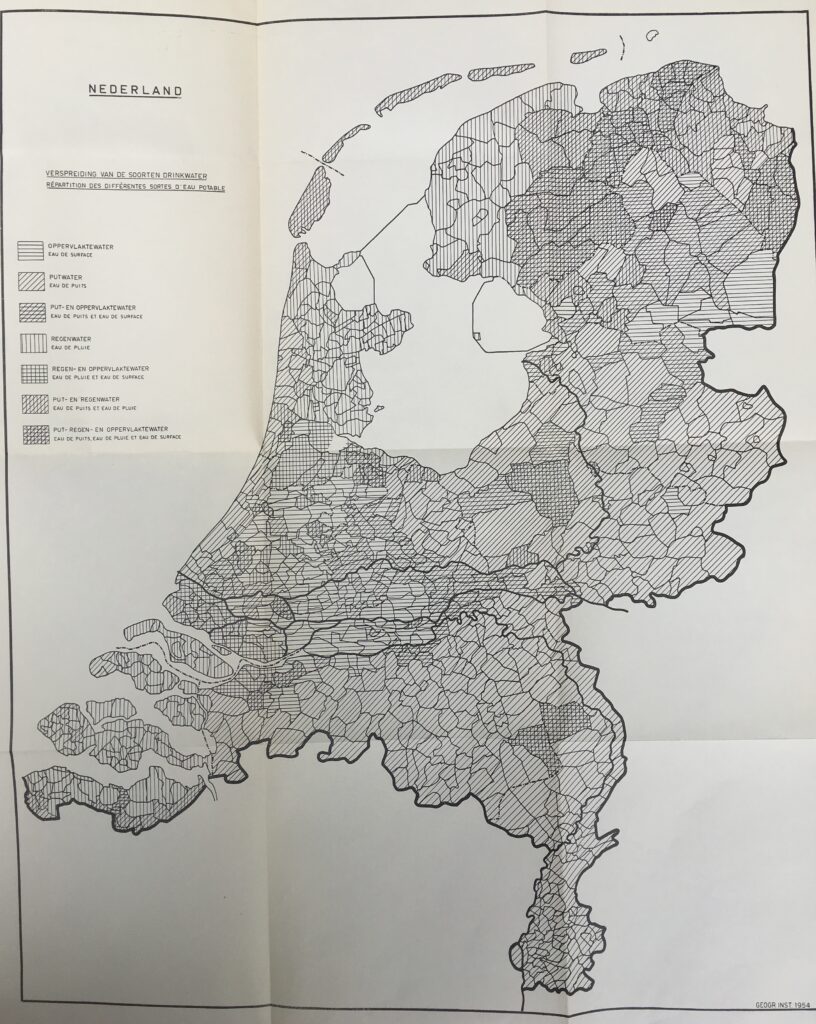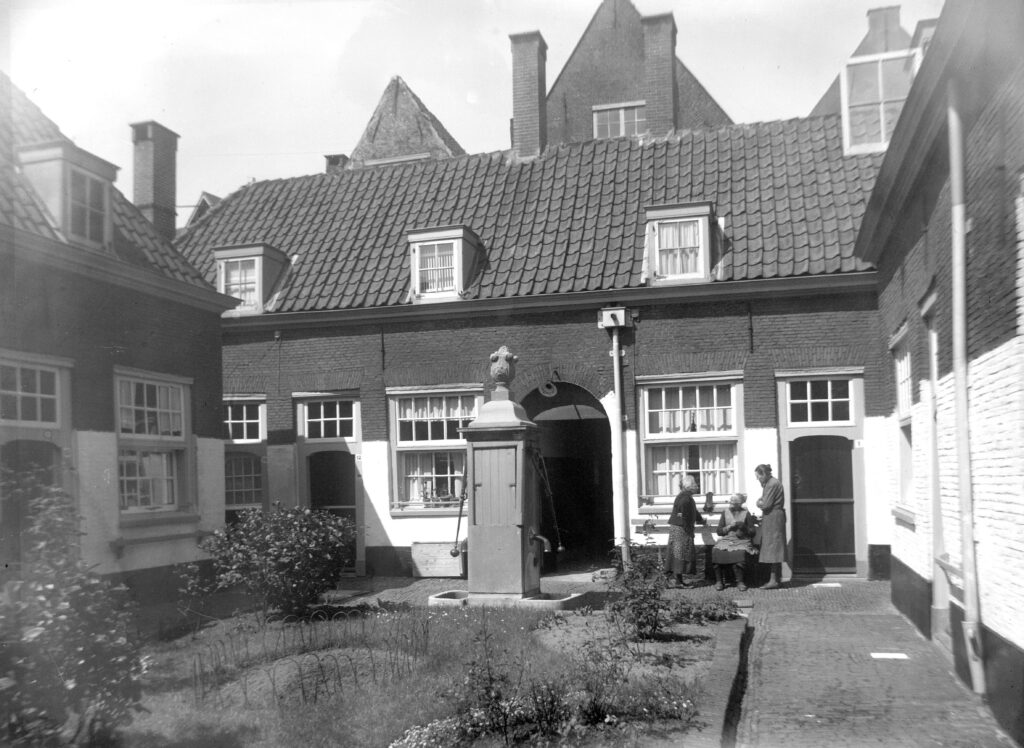Rainwater harvesting: off the grid multi source water supply
Purified piped water was only introduced in the Netherlands by the turn of the 19th and 20th century. Before that people had no choice but to secure their own water supply. City counsels did provide some public wells for the poor. But these were often insufficient to meet demand and quality standards. It is interesting to see that here rich benefactors stepped in. Some almshouses and orphanages boasted waterkelders for the storage of rainwater of considerable size that were either privately funded and/or by churches. A wonderful example of a multi source off the grid water supply can be found at the Schachtenhofje, and almshouse for poor widows and orphans in the city of Leiden. Leiden suffered from extreme surface and groundwater pollution due to the textile industries that flourished from the 15th to the 18th century. A successful textile entrepreneur, who grew up as an orphan, founded the Schachtenhofje in 1664. Beneath the courtyard a rainwater cistern and a groundwater well was constructed. The pump has two spouts, one yielded rainwater, the other groundwater. A smart system that provided fit to purpose water supply. (Read more about the water system of the Schachtenhofje)

fig. 1. A pipe diverts rainwater from the roof to a regenbak or trasbak (source: RCE)
Rainwater harvesting and cisterns in the Netherlands
Purified piped water was only introduced in the Netherlands by the turn of the 19th and 20th century. Before that people had no choice but to secure their own water supply. Private rainwater cisterns ( waterkelders , regenbakken or trasbakken) were therefor quite common in the Netherlands before the introduction of piped water systems. Rainwater was harvested from roofs and connected to underground storage spaces varying in size of a well (fig.1) or a complete basement. Rainwater cisterns of wells were common at farms as well as in cities. Well to do citizens and commercial enterprises such as beer brewers were often able and lucky enough to built their own costly rainwater cisterns to provide for themselves. Most city dwellers, however had no other choice but to obtain their water from polluted wells, ditches, ponds and rivers. Here churches and the city counsels stepped in. Many public buildings and churches were equipped with rainwater cisterns for their own and public use. Public pumps were installed against the walls of these buildings where water could be obtained. (Read more about rainwater harvesting in the city of Amsterdam by Gawronsky & Veerkamp)

fig. 2. Mean yearly rainfall in the Netherlands between 1961-1990 (source: Dufour, 1998)
Why rainwater?
Rainwater harvesting was especially vital in urban areas and along the low lying Dutch delta and rivers. Here surface water from shallow wells, rivers and canals became more and more polluted from the 15th century on due to early industrial activities such as tanneries, slaughterhouses and textile bleachers while shallow groundwater was often also contaminated and/or brackish. Settlements located near the coastal dunes were more fortunate. Here clean drinking water was stored in and purified by the sand. More to the south and east groundwater was also in general of better quality and could be obtained by natural or dug springs, brooks and wells. The Netherlands has a mean rainfall between 750 – 900 mm p/y (fig.2). Fig. 3 shows a map from the 1956 dissertation of Izak Vogelzang on the distribution of types of drinkwater in the Netherlands, either groundwater, surface water and or rainwater.

fig. 3. Distribution of types of drinking water in de the Netherlands (source: Izak Vogelzang, 1956)
©Suzanne Loen / LILA Living Landscapes
Published 9 July, 2019
